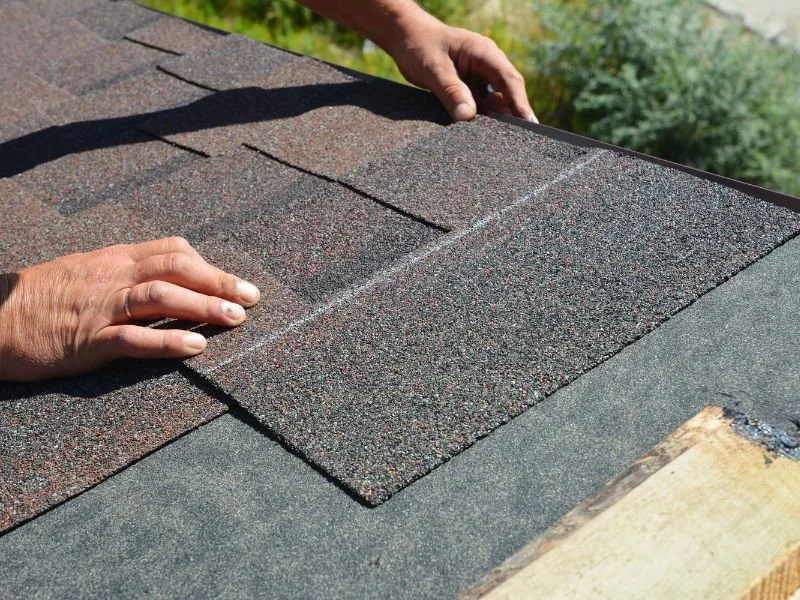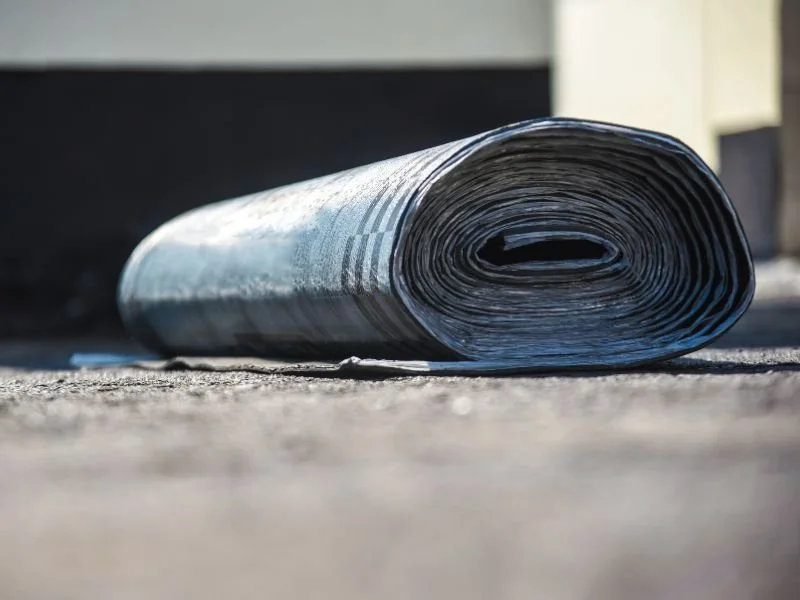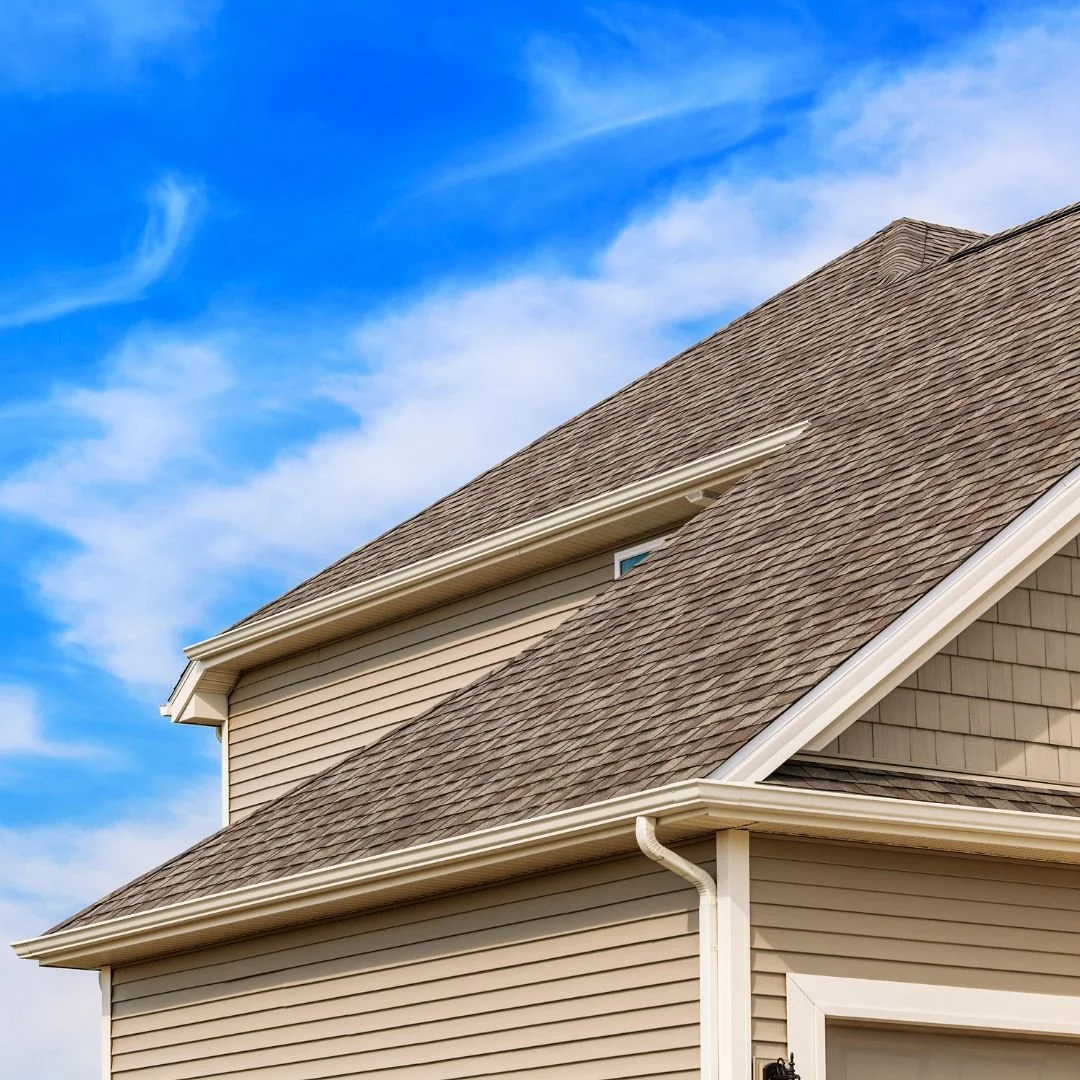What Is the Cheapest Option for a New Roof?
A guide to roof material choices, roof replacement costs, and how to find the cheapest roofing material without sacrificing a quality roof.
When you need a new roof, the big question is cost. This guide explains how roof material and roof replacement decisions shape the overall cost, then ranks the cheapest roofing material options you can buy today. You’ll learn which type of roof is the least expensive for your home, how to compare roofing contractor bids, and when a low roof replacement cost truly is cost-effective over the life of your roof system.
What actually makes the cheapest roof for your home?
Before comparing products, understand the drivers of price:
Roof size and geometry: a larger or complicated roof type (hips, valleys, dormers) increases labor and waste. The complexity of your roof can matter as much as the shingle you pick.
Material and availability: some roofing materials on the market are mass-produced and cheap to move; others are heavy or imported.
Roof system components: underlayment, roof flashing, roof decking repairs, and ventilation add to the overall cost.
Roofing company labor rates: rates vary by region and by roofing contractor skill.
For most homes, the cheapest option comes from an affordable roof material installed on a simple, sloped, single-story roof system by a reputable local crew. The sections below show how different roofing materials compare.
Cheapest roofing materials ranked (from least to more expensive roofing material)
If you’re looking for the cheapest roofing that still protects the entire roof, start here. Exact prices vary by location, but the sequence below reflects typical roofing material costs and replacement costs.
Three-tab asphalt shingles – Often one of the cheapest ways to cover a sloped roof.
Rolled roofing – A niche product for sheds and low-slope areas; the cheapest type per square foot but limited lifespan.
Architectural asphalt shingles – Cost a bit more than three-tab, but longer life and better wind ratings.
Metal roof (steel or aluminum panels) – Higher upfront cost of materials than asphalt, but long life can be cost-effective.
Clay tile / concrete tile – Beautiful, heavy, and typically an expensive roofing material to install.
Slate roof – Premium and among the higher cost options, great longevity.
Wood roof (cedar shake or shingle) – Regional and stylish, but maintenance adds to lifetime cost.
Next, let’s look at each roofing option in more detail so you can decide which roofing material is right for your home.
Asphalt shingles: the common roofing material that keeps prices down
Asphalt shingles are the most common roofing material in North American residential roofing for a reason: they’re affordable, widely stocked, and quick to install. A basic three-tab asphalt shingle roof offers the cheapest roof for many gable homes. Upgrading to architectural shingles increases durability and wind resistance while still giving an affordable roof.
Works on most sloped roof styles.
Light weight means no structural upgrade.
Easy roof repair and broad material warranties from major brands.
If you’re finding the cheapest roofing material for a typical house, asphalt remains the baseline to beat.
Rolled roofing and flat roofs: the ultra-budget solution (with limits)
Rolled roofing is a low-cost product used on sheds, porches, and low-slope or flat roof sections. It delivers inexpensive roofing quickly, but expect a shorter service life than shingles.
Use it when:
You need to dry-in a small area fast.
The roofing project is a utility building.
Avoid it on complex, visible areas of the entire roof where a cheap roof may hurt curb appeal or lifespan.
Metal roof on a budget: when steel panels become cost-effective
A metal roof (usually galvanized steel or aluminum) costs more at installation than asphalt but can last two to three times longer. Metal roofing is becoming popular for homeowners who plan to stay put and want high-quality roofing and energy savings.
Standing-seam panels resist leaks along long runs; the type of metal used affects price.
Corrugated systems can be cheaper than premium seams.
With cool-roof coatings, metal can lower attic temps—a cost-effective roofing advantage over time.
If bids are close, metal may be the cost-effective roofing material for your home, especially in hail or wildfire zones.
Tile and slate: timeless looks, premium price
Tile roof systems—clay tile, concrete tile, or clay roof alternatives—deliver classic style and durability but are heavy, requiring strong roof decking and sometimes framing upgrades. Likewise, a slate roof is gorgeous and long-lasting, yet one of the more expensive paths to a quality roof.
Expect higher material and labor due to weight and precision cuts.
Excellent longevity can offset roof replacement cost, but upfront is steep—truly an expensive roof choice.
In warm climates, tile reflects heat; in cold regions, ensure proper underlayment.
Tile roofing is one of the most durable systems, but for strictly lowest price, it’s not the winner.
Wood shake & cedar roofing: beauty with maintenance
A wood roof (often cedar roofing) offers a natural look and good insulation. It’s also one of the oldest roofing materials in North America.
Pros: warm aesthetics, renewable material.
Cons: periodic treatments, fire risk without treatment, and potential insurance surcharges. In damp climates, wood can be an expensive roofing material to maintain, making it less ideal when finding the cheapest roofing material for tight budgets.
Beyond shingles: why installation and replacement costs matter
Two houses with the same roof material can get very different bids. Why?
Roof installation complexity—steep pitch, many penetrations, and multiple stories raise labor.
Tear-off vs layover—adding a second layer is sometimes allowed on a shingle roof, but tearing off to inspect roof decking produces a better result.
Region—labor and disposal fees differ widely.
Know the line items: underlayment, ice shield, ventilation upgrades, new roof flashing, and plywood replacement. These influence the average roof replacement price as much as material.
Understanding roof replacement cost (and how to control it)
Your roof replacement cost includes material, labor, disposal, and overhead. To control replacement costs:
Keep the design simple. Eliminating a dead valley or extra dormer reduces waste.
Schedule work in the off-season if your climate allows.
Compare bids from at least three local crews—ask each roofing contractor to price the same scope so you can compare apples to apples.
If your home only needs targeted roof repair, fix it now. Small repairs keep you from paying for an entire roof replacement sooner than necessary.
Picking the right roofing option for your type of roof and climate
The right roofing choice balances roof type, weather, and budget:
Sloped roof in a hail-prone area? Architectural asphalt roof or impact-rated metal.
Flat roof on a garage? Consider modern membranes instead of rolled, or use rolled as a short-term fix.
Windy coast? Heavier laminated shingles or attached metal panels perform better than basic three-tab.
Ask yourself: Are you selling soon and need a new roof at the lowest price, or do you plan to keep the home for decades and want durable material and high-quality roofing? Your answer will point to the best roofing choice.
How to evaluate roofing company quotes and warranties
A reputable roofing company provides:
License, insurance, and a clear scope (tear-off, underlayment, ventilation, dump fees).
Manufacturer material warranties plus the installer’s workmanship coverage.
Photos of prior work and local references.
When comparing bids, look beyond the headline price. The cost of materials, labor quality, and warranty length together determine the real value of your roofing option.
Materials snapshot: pros, cons, and where each fits
Asphalt shingles (three-tab and architectural)
Type of asphalt and type of asphalt shingle determine weight and wind rating.
Best for: typical residential roofing where you want the cheapest roofing material available that still looks good.
Lifespan: 15–30 years depending on product.
Metal panels
Steel and aluminum are the most common metal roofing materials.
Best for: long-term owners seeking cost-effective roofing with low maintenance.
Lifespan: 40–70 years with proper coating.
Tile and slate
Roof tiles made from clay tile or concrete; natural slate roof for premium builds.
Best for: high-style homes, hot climates, or historic districts.
Lifespan: 50–100+ years but with a much higher cost upfront.
Wood shakes and shingles
Wooden roofing (often cedar roofing) is attractive but requires care.
Best for: dry climates or projects where authenticity matters more than minimum price.
Lifespan: 20–35 years with maintenance.
FAQ: Finding the cheapest roofing material (and making it last)
-
For most sloped houses, basic three-tab asphalt shingles are the cheapest option that still delivers a decent warranty. They are one of the cheapest ways to re-cover an entire roof and remain the default roofing material available in big-box stores.
-
On day one, metal rarely beats asphalt on price, but over 40–50 years a metal roof can be more cost-effective, especially where storms shorten shingle life. Remember: roofing is one part material, one part labor—longer life shifts value toward metal.
-
Natural slate roof and premium tile roof systems rank near the top of the list for expensive roofing material and installation. They’re stunning, but they’re not the answer when you’re finding the cheapest roofing material.
-
Rolled roofing can be the cheapest type for small, low-slope structures. Use it sparingly; it’s truly a short-term solution.
-
Specify the exact roof material, underlayment, and accessories you want. Get three written bids from a local roofing company, ask for options (basic vs architectural shingles), and compare replacement costs line by line. A well-scoped job reduces surprises and keeps the overall cost down.
-
Yes—disposal fees, plywood replacement, ventilation, and unforeseen roof repair can raise the number. Ask for unit prices for roof decking replacement; this sets expectations when hidden damage appears.
-
Architectural shingles often hit the sweet spot of price, performance, and look. They’re still asphalt, but thicker and more dimensional than three-tab—great when you want an affordable roofing material that elevates a façade.
-
You can move to lighter concrete tile styles or asphalt roof with designer patterns, but changing from tile may require trim adjustments. Discuss with your roofing contractor before switching.
-
Yes. Larger homes simply take more material and labor. Roof size plus pitch and roof type (valleys, skylights) drive labor hours, making the overall cost scale up.
-
For many homeowners: architectural asphalt today, metal roofing is becoming a smart second choice for long-term value. Both meet modern wind codes and offer strong material warranties.
Quick comparison table
| Roofing option | Upfront cost | Typical life | Pros | Considerations |
|---|---|---|---|---|
| Three-tab asphalt shingles | Lowest | 15–20 yrs | Widely available, fast install | Shorter life, lower wind rating |
| Architectural asphalt | Low–mid | 20–30 yrs | Better wind rating and look | Slightly more than three-tab |
| Metal roof (steel) | Mid | 40–50 yrs | Long life, cool-roof coatings | Higher upfront than asphalt |
| Rolled roofing | Lowest | 5–10 yrs | Quick, cheap for sheds/porches | Short life, utilitarian |
| Tile roof (clay tile/concrete) | High | 50+ yrs | Durable, classic style | Weight, structural checks |
| Slate roof | Highest | 75–100 yrs | Premium, long life | Very heavy, very high price |
| Wood roof (cedar) | Mid–high | 20–35 yrs | Natural look | Maintenance, fire treatment |
How to decide: a simple step-by-step
Confirm whether you need a new roof or just roof repair.
Pick a target lifespan (10, 25, or 50+ years).
Shortlist 2–3 roofing options that fit your climate and roof type.
Request three bids using the same scope and roof material.
Choose the lowest overall cost option that still meets your durability goal—a truly cost-effective choice.
Bullet-point summary: the bottom line on the cheapest roof
For most homes, three-tab asphalt shingles deliver the cheapest roof today; architectural shingles add value for a small premium.
Rolled roofing is the cheapest type for sheds and low-slope add-ons but has a short life.
A metal roof costs more upfront but can be the most cost-effective over decades.
Tile roof and slate roof are long-lasting but expensive roofing material choices.
Get multiple bids from a licensed roofing contractor or roofing company, and compare scope, material warranties, and replacement costs line by line.
The right roofing pick balances roof size, roof system complexity, climate, and how long you’ll own the home.
No matter the roof material, good ventilation, flashing, and workmanship protect your investment and deliver a quality roof at the best possible price.
If you’d like help finding the cheapest roofing material for your address—and a line-item estimate for your roof replacement cost—we can connect you with vetted local pros for cost-effective bids.















